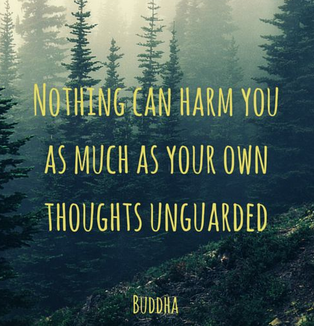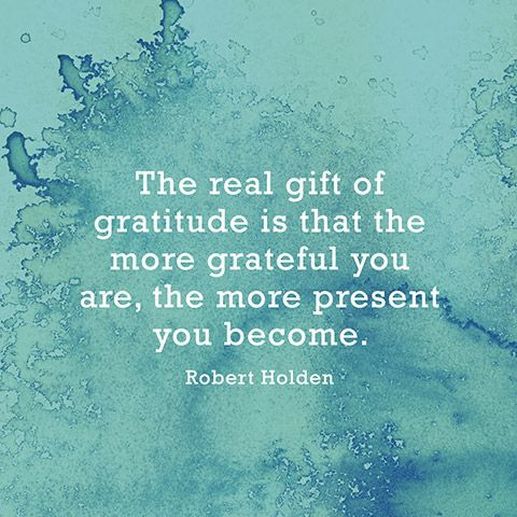Sandy Wright's Blog, page 9
February 22, 2019
Monkey Mind
I've been having trouble getting to sleep lately. I toss and turn so tense that my muscles cramp during the night. Usually, my mind is chattering ceaselessly, reviewing the challenges of the day and my frustration over relationships and situations that seem out of my control.
Last night, I tried performing the “Monkey Mind” meditation shortly before going to bed. It works! It gives me a method to shut off the constant babble in my head, which, in turn, lets my quieted mind move more easily into rest.
The “monkey mind” is a Buddhist metaphor that describes the natural, chaotic state of our untrained minds. This exercise creates a visual representation of your mind to help you move from chaos to calm. When you’re first learning to meditate, this visual helps you understand how easily the mind becomes distracted. Knowledge is power, and that which is known can be controlled. Give this meditation a try and see if it works for you also.
 What you’ll need
What you’ll need
1 Mason jar filled with water
1 spoonful of dirt of sand
Ritual Steps:
1. Observe the clarity of the water in the Mason jar. It’s clear and free, with nothing to muddy it.
2. Add a spoonful of dirt/sand to the water. This represents your thoughts, feelings, fears and worries. Tighten the lid on the jar and shake it vigorously. This represents how our thoughts and feelings are in a constant state of motion.
3. Look at the water. Is it unclear, distorted, cloudy, and murky? Take a moment to reflect on how this jar is similar to the endless chatter and movement in your mind.
4. Breathe. Watch the sediment slowly settle to the bottom. Breathe. Watch the dirt settle. Breathe. Watch the dirt settle. This is your focused point of attention—watching the clutter of your mind settle. Breathe. Watch the dirt settle.
5. Every time your mind is hijacked by another thought, feeling, or worry, shake the Mason jar and start over. Go back to your point of attention, watching the dirt settle and breathing. If another thought, idea or worry comes into your mind, shake the Mason jar again.
6. Continue this exercise for 13 minutes.
7. Repeat steps 1 through 6 whenever you feel as if you’re in a state of chaos.
Blessed be.
Last night, I tried performing the “Monkey Mind” meditation shortly before going to bed. It works! It gives me a method to shut off the constant babble in my head, which, in turn, lets my quieted mind move more easily into rest.
The “monkey mind” is a Buddhist metaphor that describes the natural, chaotic state of our untrained minds. This exercise creates a visual representation of your mind to help you move from chaos to calm. When you’re first learning to meditate, this visual helps you understand how easily the mind becomes distracted. Knowledge is power, and that which is known can be controlled. Give this meditation a try and see if it works for you also.
 What you’ll need
What you’ll need1 Mason jar filled with water
1 spoonful of dirt of sand
Ritual Steps:
1. Observe the clarity of the water in the Mason jar. It’s clear and free, with nothing to muddy it.
2. Add a spoonful of dirt/sand to the water. This represents your thoughts, feelings, fears and worries. Tighten the lid on the jar and shake it vigorously. This represents how our thoughts and feelings are in a constant state of motion.
3. Look at the water. Is it unclear, distorted, cloudy, and murky? Take a moment to reflect on how this jar is similar to the endless chatter and movement in your mind.
4. Breathe. Watch the sediment slowly settle to the bottom. Breathe. Watch the dirt settle. Breathe. Watch the dirt settle. This is your focused point of attention—watching the clutter of your mind settle. Breathe. Watch the dirt settle.
5. Every time your mind is hijacked by another thought, feeling, or worry, shake the Mason jar and start over. Go back to your point of attention, watching the dirt settle and breathing. If another thought, idea or worry comes into your mind, shake the Mason jar again.
6. Continue this exercise for 13 minutes.
7. Repeat steps 1 through 6 whenever you feel as if you’re in a state of chaos.
Blessed be.
Published on February 22, 2019 22:19
February 15, 2019
Amazing Owls & Magic
 In rural and forest areas, such as around our cabin, the frigid stillness of February nights is sometimes shattered by the mating call of the Great Horned Owl. It’s an eerie unearthly sound. And their hunting noises are downright frightening. I remember hearing a long, single owl call as I lay in bed one night. “Hoo- hoo-hoo.” Immediately after, an animal, perhaps a rabbit who had foolishly ventured out of its hole after dark, gave a series of blood-curdling screams which were cut off abruptly mid-cry.
In rural and forest areas, such as around our cabin, the frigid stillness of February nights is sometimes shattered by the mating call of the Great Horned Owl. It’s an eerie unearthly sound. And their hunting noises are downright frightening. I remember hearing a long, single owl call as I lay in bed one night. “Hoo- hoo-hoo.” Immediately after, an animal, perhaps a rabbit who had foolishly ventured out of its hole after dark, gave a series of blood-curdling screams which were cut off abruptly mid-cry.I went out in the woods the next morning and looked for blood marks. All I found was a circle of tiny frenzied paw prints.
No bird (except maybe the raven) has as much myth and magic surrounding it as the owl.
Because it’s a nocturnal bird, and night time has always seemed mysterious, the owl is a symbol of the feminine, the moon, and the night.
Ancient civilizations had widely divergent opinions about owls. The Greeks chose owls to represent Athena, the goddess of wisdom. She had a companion owl on her shoulder which revealed unseen truths to her, and it was the guardian of the Acropolis.
The Romans considered them bearers of ill omens. They believed placing an owl feather on a sleeping person would allow one to discover the sleeper’s innermost secrets. It’s not hard to understand this superstition when you look at the owl. It is a bird of night, stealthy and soundless in flight, and its eyes can adjust from telescopic to microscopic focus in a fraction of a second. When you look into an owl’s eyes you certainly feel he knows your deepest secrets.
The ancient Egyptians had a kinder view of owls, believing that they protected the spirits of the dead as they travels to the underworld.
Many Native shamans considered owls to be intelligent messengers, and would listen for their calls so they could time their magical work accordingly. To the Pueblo, they were associated with the Skeleton Man, the god of death, but also a spirit of fertility.
If you work with owl medicine, you will be able to see and hear what others try to hide. You have the unique ability to see into the darkness of other’s souls and life. This can be scary to many people and one reason why owl is often the medicine of witches. But while you may be drawn to magical practices and perhaps the dark arts, you should resist any practice that takes energy away from another person or being.
There are more than 100 species of owls, and they have always had an intimate link to humans. Where we live, so do rodents, one of the owl’s primary food sources.
 The Great Horned Owl, sometimes called a hoot owl, is the most successful predator in the owl family. It can easily snap the neck of a woodchuck or rabbit and will not hesitate to take whatever live food presents itself, even other birds of prey. This has enabled the owl to adapt to constantly changing environments. Unfortunately, this same ferocity has interfered with the reintroduction of the peregrine falcon into some of its former habitats, including the Virginia coast. In the peregrine’s absence, the great horned owl has taken up residence and refused to share its habitat or food source.
The Great Horned Owl, sometimes called a hoot owl, is the most successful predator in the owl family. It can easily snap the neck of a woodchuck or rabbit and will not hesitate to take whatever live food presents itself, even other birds of prey. This has enabled the owl to adapt to constantly changing environments. Unfortunately, this same ferocity has interfered with the reintroduction of the peregrine falcon into some of its former habitats, including the Virginia coast. In the peregrine’s absence, the great horned owl has taken up residence and refused to share its habitat or food source.The favorite food of the great horned is the skunk! The owl doesn’t have a great sense of smell, which is probably why it is the skunk’s most fearsome predator.
The tufts on the top of this owl’s head is not its ears, but merely tufts of feathers. The ears are located lower in the head.
 The Barn Owl, (my totem bird, along with the raven) can locate its prey even easier with its ears than with its eyes. The ears of the owl are asymmetrical, and one ear is usually larger than the other. They are also located in different positions on the head. This enables it to sort out the auditory signals it picks up. The barn owl will swivel its head and rock back and forth to pinpoint noises of its prey. It also makes periodic clicks as a form or echo location.
The Barn Owl, (my totem bird, along with the raven) can locate its prey even easier with its ears than with its eyes. The ears of the owl are asymmetrical, and one ear is usually larger than the other. They are also located in different positions on the head. This enables it to sort out the auditory signals it picks up. The barn owl will swivel its head and rock back and forth to pinpoint noises of its prey. It also makes periodic clicks as a form or echo location.If you have an owl in your barn, count yourself lucky! Unfortunately, many hunters and farmers kill owls, believing that cats will do better with rodent control. Not true. A barn owl can kill ten time the amount of mice that a cat can in a single night and more if it has young to be fed.
Owls have some of the strongest talons in the avian kingdom. The five-pound great horned can curl its talons with a force of 300 pounds per square inch, roughly comparable to the strongest human bite. And the largest owls, such as the great horned, have talons comparable in size to those of much bigger eagles, which may explain why even desperately hungry eagles usually won’t attack their smaller cousins. In fact, depending on the habitat, great horned owls can be considered “apex predators,” meaning that healthy adults have no natural predators in the wild.
Owls blink by closing their upper eyelids, giving them a human-like expression, but, unlike humans, they cannot move their eyes. Instead, their neck is flexible. While it can’t turn completely around, they can move it so quickly that it can appear to make a full rotation.
If an owl has claimed you as a totem and your neck is stiff and inflexible, you may be hindering your own perceptions to a great degree.
The barn owl has a heart-shaped facial disk which is unique among owls. As a totem, this reflects the ability to link the heart and mind. It also has darker eyes, and a golden buff feathering on top. When seen at night from below it has a ghostly appearance, which has earned it the name of ghost owl. It is an owl whose medicine can connect you to old haunts and spirits of properties and homes that may still be lingering about. Its medicine can be used to help develop mediumship and spirit contact.
Many owls do not build nests. They lay eggs in the forks of trees or use the abandoned nests of other birds. People sometimes find owlettes and fledglings at the base of trees where they have fallen. Many people pick them up, believing them to be abandoned. This is rarely so. If left alone, the mother will take care of them.
Owls fly silently; the front edge of the wing has a fringe that silences flight, and the large wingspan enables the bird to fly slowly and smoothly. This silence is something that all with an owl totem should practice. Keep silent as you go about your business.
We know quite a bit about owl’s eating habits, predominantly due to “owl pellets.” An owl will usually swallow its prey whole and head first. The parts of the prey that are indigestible (bones, fur, teeth, claws, and such) are then regurgitated in the form of pellets. It is said that by swallowing the prey head first, the owl takes into itself the wisdom and energy of the prey. The regurgitation reflects its ability to eliminate those aspects that are unbeneficial and unhealthy for it.
 To awaken your owl senses, select a night when you will be alone. Outside, light a single black candle, and decorate your space with tokens of winter, such as pine cones and evergreen boughs. Gaze into the flame while you visualize an owl flying silently above a frozen woodland. See it lead you to your goal.
To awaken your owl senses, select a night when you will be alone. Outside, light a single black candle, and decorate your space with tokens of winter, such as pine cones and evergreen boughs. Gaze into the flame while you visualize an owl flying silently above a frozen woodland. See it lead you to your goal.Return slowly from your vision of the owl to the here and now. Tonight you’ll likely have a vivid dream relating to your quest.
Happy flying, and Blessed Be.
Published on February 15, 2019 18:03
February 8, 2019
Hearth and Home
 For Christmas this year, my son Ian gave me a small Hestia statue. I was going to make an altar in our fireplace for her. She is, after all, Goddess of the Hearth. But she made it clear she wanted to live in our kitchen, so there she resides, on the mantle of our kitchen window.
For Christmas this year, my son Ian gave me a small Hestia statue. I was going to make an altar in our fireplace for her. She is, after all, Goddess of the Hearth. But she made it clear she wanted to live in our kitchen, so there she resides, on the mantle of our kitchen window. Few of us have an actual hearth anymore – that central location bordering an open fire that serves as light, heat, and cooking spot. The hearth is the central symbol of the home and love, nurturing and safety. And the hearth keeper—the cook-- holds both the inner and outer worlds simultaneously.
On farms in China and Japan, the cook is often considered so valuable that he is excused from working in the fields so he can devote his energies to cooking the midday meal. In monasteries, cooking is regarded as an art. Only the monks of long-standing practice and wisdom cook for the temple.
In Latin, focus means hearth. I think we’ve lost that focus, lost the center of our home that is so important to true contentment. Honoring the hearth is a state of being that radiates outward, nourishing other parts of our lives.
That’s what my little Hestia statue now reminds me daily: to weave more home and hearth ritual back into my daily life.
It’s easy to lose our focus, to not pay attention. Listening to TV or talk radio, scanning emails or Facebook on our phones while we chop and stir in the kitchen, these are all habits that get in the way of the practice of consciously tending the hearth.
Bringing ritual back into the kitchen is actually a way of coming back to the center of yourself. But how does one begin to change something as intimate as eating habits?
I’m starting with healthier foods, closer to the rhythms of the seasons, and in synch with my hunger schedule. Nothing elaborate. Cooking fresh ingredients, simple meals. Taking the emphasis off of what I can put in the microwave and eat right now. Eating always with mindfulness, rather than ravenous mindless snacking because I’m lazy and waited too long to fix something.
I’m also going to bring awareness into what goes on in my kitchen, and make it a sacred space.Light a candle for Hestia when we begin cookingStand in the kitchen, just for a moment, without doing anything, to take inventory of my mental and emotional state. Am I feeling scattered, worried or angry? I am about to make something with my hands, and that is a power in itself. Offer up any irritability in an offering. Then release it.Limit distractions. My phone is merely a tool. I don’t need to use it now. Facebook and messages, even phone calls, can wait.Honor myself as a cook. Even if dinner is leftovers and a piece of bread, respect the food and its preparation.Decorate the room with crystals, greenery and fresh herbs in pots, plus a pleasing natural fragrance. Experiment with what brings me a sense of calm.Finally, clean the kitchen as if it were my temple. I already know a sparkly clean kitchen makes me happy. Keep it that way always!
What rituals do you perform mindfully now in your hearth and home? Are there practices you’d like to add?
May your home be a place of comfort and refuge to you too.
Happy Valentine’s Day.
Published on February 08, 2019 15:00
February 1, 2019
Hagia Sophia and Peace
 I’m sharing with you today a wonderful writing from feminist witch and activist Z. Budapest, from her book The Grandmother of Time.
I’m sharing with you today a wonderful writing from feminist witch and activist Z. Budapest, from her book The Grandmother of Time.Speaking as the Goddess Hagia Sophia, this passage embodies the spirit of February and late winter perfectly.
“I have hidden this month’s message inside a bear’s cave, then changed my mind and thrown it on your threshold. Did you feel me encircle your house? You would hardly recognize me, I am so beautiful, my cheeks are red from the winds, and my feet are damp from all the moisture I am pumping up to the tips of my forests from the depth of the earth.
Nothing is showing now, of course. It’s still the dead of winter, but I have my hidden activities. We are busy down in the depths! My rowan is about to burst out in flowers, and in the south blooms my laurel, my bay. There are crocuses in my hair, and I have tiny snow-white flowers blending with the snow itself. I am heralding an initiation.
A spiritual strength, unlike that of any other time, is surging through me like the sap of the trees. I care for the depths of the soul. It’s a new down. There is no more need to hide the spiritual strength of women. My name rings out freely from their lips, and I answer the call. I answer the call every time. This season I am the all-wise seeress, the witch of transformation. Have you heard the stirrings of my power?”
Sophia, the spirit of female wisdom, disguised herself as a white dove, her sacred bird. Christianity tried to write her out completely, retaining only the symbol of the dove, which is the giver of powers to Jesus at his baptism, and also appeared to the apostles when they gathered after Jesus was killed.
In Gnostic tradition, Hagia Sophia, the Great Mother was born from silence. She was the great revered Virgin in whom the Father was concealed before he created anything. She suffered great slander from the new patriarchal religions, which despised a female god but couldn’t quite eliminate her worship.
 Eastern Christians built her a magnificent cathedral in Constantinople in the sixth century A.D., which became one of the Seven Wonders of the World.
Eastern Christians built her a magnificent cathedral in Constantinople in the sixth century A.D., which became one of the Seven Wonders of the World. “Sophia” in ancient Greek translates to “wisdom,” and from this we derive the words “philosophy” and “sophisticated.” And “Holy Wisdom” translates to Hagia Sophia. Her cathedral represents harmony, peace and religious tolerance and is a meeting point of the world’s religions.
We are living through one of the most turbulent times in American history. Racism, gun violence, drug addiction, sexual abuse, religious intolerance, immigration issues — you name it — abound at an alarming rate.
Last year saw wave after wave of new revelations about the extent of the Catholic Church’s sex abuse crisis. It saw deadly hate crimes, as well as major #MeToo moments in many major communities. While we won critical milestones for religious minorities on Capitol Hill, we also witnessed a radical conservative bloc moving further to the right in the United States — wandering into nativist, anti-immigrant and, frankly, anti-Semitic territory.
What better time for us to recall the precepts of Hagia Sophia: Harmony. Peace. Religious tolerance. Finding a meeting place of the minds.
Jesus, the Hebrew prophets, Allah, the Pagan Gods and Goddesses, all welcome mankind in its entirety. Love for all. No matter which god you worship, I’m pretty sure that God judges us first on how we treat the stranger, and then on how we meditate on his omnipotence.
My spellwork (and prayers) this year are going to center on making even a small dent on the above list of atrocities, and getting back on the path of blessing, not cursing, each other in 2019.
Blessed Be!
Published on February 01, 2019 19:12
January 25, 2019
A Discovery of Witches
 If you’re a fan of author Deborah Harkness’s All Souls paranormal trilogy, you’ll be as delighted as I was to discover her first book, A Discovery of Witches, has been adapted as a slow-burn TV series streaming on Sundance.
If you’re a fan of author Deborah Harkness’s All Souls paranormal trilogy, you’ll be as delighted as I was to discover her first book, A Discovery of Witches, has been adapted as a slow-burn TV series streaming on Sundance.Diana Bishop (Teresa Palmer, Hacksaw Ridge, Warm Bodies) is a historian studying at Oxford. She is also a powerful witch trying to deny her own heritage. Her magical powers are inherited from family lines she can trace back to Salem. But she refuses to use them because her parents were both murdered when she was a young girl, and magic reminds her of their death.
Then, during her research at Oxford’s Bodleian Library, she calls up an ancient, bewitched—and long-missing—manuscript. This attracts the attention of the entire magical community, including the enigmatic vampire Matthew Clairmont (Matthew Goode, Downton Abbey, The Crown). Matthew is trying to solve the looming threat of his species’ decline and approaching extinction.
His alliance with Diana to find the book before it falls into the wrong hands leads to romantic attraction and breaks an ancient agreement between the magical species.
A Discovery of Witches is being touted as a Twilight series for grownups, but I don’t like the comparison. First, the “grown up” part of the comparison changes the entire story: the stakes are higher, and the action is more intense. The characters are not growing into their personalities and lives, they’re already mature, capable and powerful beings. (Read: fully functioning females who make decisions independently from their boyfriends) The cast is unique and immensely talented (read: no long, moody stares). The show is also significantly sexier, scarier, and more stylish than the Twilight films.
he British and Italian backdrops are put on gorgeous display. The Bodleian Library, the site of many Harry Potter scenes in the first three movies, was my particular favorite.
In some ways, A Discovery of Witches has more in common with another book-to-TV-series, Outlander. Both have a similar recipe for love: Despite all the supernatural and political obstacles in their way, an extremely old-fashioned man and a very modern woman fall hard for each other and commit for life.
In Outlander, Jamie Fraser is an 18th-century man, but he’s educated and has an open mind, so he’s able to adapt to Claire’s modern sensibilities. A Discovery of Witches’ Matthew Clairmont is a few centuries older. He was born around 500 A.D., got turned into a vampire 37 years later, and has roamed the earth ever since. But he didn’t remain stuck in his original era. He has turned into a true Renaissance man. Adapting to each century, he’s been everything from warrior to healer, scientist to spy, all of which makes him the ideal suitor for Diana.
I like The Discovery of Witches series for many of the same reasons I love Outlander. First, the magic makes sense to me historically and intellectually, which is of paramount importance to THIS reader. Almost as important, I like both the main characters and the supporting cast. The acting is nuanced and keeps my interest. I admit, Jaimie Frazier’s accent and depth of facial expressions won me over immediately, while Matthew is more of a slow burn, but they’re now both imprinted on my mind.
The first episode of A Discovery of Witches did seem a bit chaotic, with a lot of scene-setting in a short time frame, but keep watching. I think by the time Season One ends, you’ll be impatiently looking forward to the next year. Good news! The series has already been renewed for second and third seasons, and is expected to roughly follow the second and third books of the trilogy.
A Discovery of Witches season 1 is available to stream in full on Sundance Now and Shudder.
Published on January 25, 2019 17:26
January 4, 2019
Resolutions for a New Year
 Happy New Year, you beautiful, complicated, weird people.
Happy New Year, you beautiful, complicated, weird people.Has the fresh slate of a new year motivated you to make changes in your life, great or small?
If so, what are they? And are you confidant that you will keep them, or are you already busted?
If not, why not?
I’m welcoming 2019 with open arms and a slew of good intentions. I’m gonna list my goals here, and return in January 2020 to evaluate progress. You’re welcome to add yours in a comment. Words have power, and listing your intentions is a powerful act.
It’s important to remember that we don’t have to be perfect in our resolve. If you set the intention to exercise every day, and then you miss two days in a row, do you quit exercising entirely? Hell no! Improvement is still improvement, even if the progress is jerky.
But I find I do better if there is some structure to my goals. The method I use is SMART goals. The acronym stands for Specific, Measurable, Achievable, Relevant and Time-bound.
SPECIFIC refers to a concrete, clearly-defined goal. My first goal: I want to finish my book, Crescent Moon Crossing this year.
MEASURABLE is the ‘drilling down’ on that goal: I want to write 500 words every day until the book is finished.
Next is ACHIEVABLE. I want to aim high, but within reason. I know that writing a book is doable for me, since I already have one published. But also want to establish the habit of writing every day, while also feeling like I have a life away from my desk.
Is this a RELEVANT goal? You bet it is! I decided to write this stand-alone suspense before going on to write Book 2 in my Ancient Magic series. I’ve futzed around so long that my first book has gotten stale. I desperately need to jump-start a healthy daily writing habit.
And, at last, the T for TIMELINE, probably the most important. Looking at my calendar, I see there are 4 days in the next 4 months where I have prior commitments that will prevent me from achieving my 500 word goal. I move my deadline out four days, to April 20th, and write “Rough Draft Finished” on that date. It feels great!
My List – 15 New Year Resolutions for 2019:
Complete my 2nd novel, Crescent Moon Crossing, by May 1.Novel accepted by a publisher-or- published, by end of July.Attend Dallas Bucheron and Donald Maas workshop (October) Exercise 10k steps at least 5 days a week (by walking each dog daily)Take a Tai Chi class – twice for 4 weeks eachTake a Yoga class – weeklyDo a plank exercise 5 days a week
Limit carbs to 250grams a day. Adjust as needed to lower A1C to Drink at least 35oz water a day (in addition to tea & coffee Release and identified toxic people from my life. I know who they are, no need to name them here. Habit Changes Bed by midnight Vacuum 2x a week. Dog hair be gone! Book all DR visits at first of year, and bunch together. Read and Netgalley review 3 books/month Clean out closets and donate old clothes. Eliminate ruthlessly, and reward myself with one new outfit.
This list feels like A LOT. Any volunteers to share their Resolutions list here? I’ll share your pain and support you for the entire year!
Published on January 04, 2019 18:19
December 28, 2018
An Attitude of Gratitude
I’m feeling a great deal of gratitude this season, albeit mixed with pain.
Gratitude because my youngest son is taking positive steps to extricate himself from a years-long toxic relationship, and start a life as a single father. Pain because his partner has alleged child abuse and is preparing to fight him for full custody of their 3-year-old son. She says she has also filed abuse charges against me, although I have received no notification.
 I have no worries about the charges, but I’ve been so mad I could spit for most of the holidays. However, I’m proud of my son for standing firm while considering his son’s best interests in every interaction.
I have no worries about the charges, but I’ve been so mad I could spit for most of the holidays. However, I’m proud of my son for standing firm while considering his son’s best interests in every interaction.
He’s heading back to his apartment, to continue house-hunting and packing after meeting with his lawyer. This will be an anxiety-fraught New Year, but he knows we will stand by his side in support no matter what he decides going forward. And we will continue to love this tiny being who calls him “Daddy” and be grateful for the time we have with him in the future.
Research has shown that being grateful has a deep and lasting positive impact on your body. Good friends, family, the kindness of others. Scientists are saying that feeling gratitude for the good things in our lives, instead of dwelling on the negative aspects, boosts out physical health as much as our mental state. Recent studies have linked living a thankful life to fewer aches and pains, better sleep, and more.
Of course, when experts talk about gratitude, they mean more than simply saying the “thank you” you’ve been taught since you were old enough to talk.
 “Gratitude is affirming the goodness in one’s life and recognizing that it, and recognizing that its source lies outside the self,” says Robert Emmons, Ph.D., a professor of psychology at University of California-Davis, and author of The Little Book of Gratitude. He says it’s feeling indebted—not just to for the neck massager you received as a gift for Yule, but also to nature for a crisp winter morning.
“Gratitude is affirming the goodness in one’s life and recognizing that it, and recognizing that its source lies outside the self,” says Robert Emmons, Ph.D., a professor of psychology at University of California-Davis, and author of The Little Book of Gratitude. He says it’s feeling indebted—not just to for the neck massager you received as a gift for Yule, but also to nature for a crisp winter morning.
Emmons has been studying the connection for more than fifteen years. In an early study, he asked a group of volunteers to write down five things they were grateful for once a week for ten weeks. Sample entries: “The sun on my face”; “Becoming a grandparent.” Other groups recorded either small hassles or neutral daily events. At the end of the study, the blessing-counters reported feeling 25% happier, but the rest of the findings were more tangible: The people who practiced gratitude spent 30% more time exercising and had fewer health complaints.
In another study by the Journal of Health Psychology, subjects who kept a gratitude journal for just two weeks slept better and had lower blood pressure readings. Other research found this kind of journaling resulted in a 40% drop in daily smoking rates after two months.
This all indicates that there’s a powerful connection between our minds and our bodies. Researchers have some theories that could help explain it. For one thing, when we feel overwhelmed—whether by work deadlines or family squabbles—our nervous systems go into a state of high alert. The body floods with stress hormones like cortisol, which over time can cause a cascade of health problems, from high blood pressure to inflammation. The sense of profound well-being that washes over us when we feel grateful sends a message to our systems that all is well, quieting those responses. “Feelings of gratitude trigger the parasympathetic, or calming, branch of the nervous system,” says Emmons.
Perhaps the biggest payoff comes when we feel indebted to ourselves in the same way we do to others. “People often report feeling grateful for their bodies, for the ability to see, smell and hear,” says Emmons. “As a result, they take better care of themselves.”
 Simple Ways to Feel More Grateful
Simple Ways to Feel More Grateful
Gratitude is a choice. We can create it at any moment in our lives. Like any practice, it becomes more automatic. Here are some ways to make gratitude your new default setting.
Write it Down
One of the most studied methods is to keep a gratitude journal. The experts suggest you write down a handful of good things per day. To get the most out of this practice, don’t just dash off a short laundry list. Instead, stop and contemplate why you feel grateful, being as specific as possible. Try for 3 or 4 sentences about each positive thing.
Give Yourself Gratefulness Reminders
Stop several times throughout the day to notice, appreciate, and savor the good in your life. You might think of something you’re grateful for each time you walk inside or outside: The sunlight on your face, the smell of coffee when you walk back inside, or your dog’s happy greeting.
Go Mobile
Try an app like Gratitude Journal, which pings you with prompts. Share your posts with friends on Facebook, or set up a Gratitude section on your Pinterest. Or click through the website thnx4.org, which as developed by UC-Berkley’s Greater Good Science Center to act as an electronic storehouse of positivity.
Say it out Loud
Find opportunities to express your appreciation to another person, and do it in a way that acknowledges the giver rather than how his or her act makes you feel. Say how the other person’s efforts or qualities help you, for example. Psychologist Sara Algoe, Ph.D., and associate professor of social psychology at the University of North Carolina-Chapel Hill, calls this, “putting the ‘you’ in ‘thank you’.”
Focus on Little Surprises
We tend to think of the things we’re grateful for in capital letters. Family, Health, Financial Stability. Also look around for surprising little acts of kindness to give yourself a gratitude reboot. Remember the person who held the door for you going into the store, or the driver who made a space to let you get out of the parking lot onto a crowded street.
It’s so easy to slip into negative thought about our lacks, or the corruption in government, or your impossible to-do list at work. Remember to take the time to weave a healthy, happy of circle gratitude around you as well.
Blessed Be! And happy New Year.
Gratitude because my youngest son is taking positive steps to extricate himself from a years-long toxic relationship, and start a life as a single father. Pain because his partner has alleged child abuse and is preparing to fight him for full custody of their 3-year-old son. She says she has also filed abuse charges against me, although I have received no notification.
 I have no worries about the charges, but I’ve been so mad I could spit for most of the holidays. However, I’m proud of my son for standing firm while considering his son’s best interests in every interaction.
I have no worries about the charges, but I’ve been so mad I could spit for most of the holidays. However, I’m proud of my son for standing firm while considering his son’s best interests in every interaction.
He’s heading back to his apartment, to continue house-hunting and packing after meeting with his lawyer. This will be an anxiety-fraught New Year, but he knows we will stand by his side in support no matter what he decides going forward. And we will continue to love this tiny being who calls him “Daddy” and be grateful for the time we have with him in the future.
Research has shown that being grateful has a deep and lasting positive impact on your body. Good friends, family, the kindness of others. Scientists are saying that feeling gratitude for the good things in our lives, instead of dwelling on the negative aspects, boosts out physical health as much as our mental state. Recent studies have linked living a thankful life to fewer aches and pains, better sleep, and more.
Of course, when experts talk about gratitude, they mean more than simply saying the “thank you” you’ve been taught since you were old enough to talk.
 “Gratitude is affirming the goodness in one’s life and recognizing that it, and recognizing that its source lies outside the self,” says Robert Emmons, Ph.D., a professor of psychology at University of California-Davis, and author of The Little Book of Gratitude. He says it’s feeling indebted—not just to for the neck massager you received as a gift for Yule, but also to nature for a crisp winter morning.
“Gratitude is affirming the goodness in one’s life and recognizing that it, and recognizing that its source lies outside the self,” says Robert Emmons, Ph.D., a professor of psychology at University of California-Davis, and author of The Little Book of Gratitude. He says it’s feeling indebted—not just to for the neck massager you received as a gift for Yule, but also to nature for a crisp winter morning.Emmons has been studying the connection for more than fifteen years. In an early study, he asked a group of volunteers to write down five things they were grateful for once a week for ten weeks. Sample entries: “The sun on my face”; “Becoming a grandparent.” Other groups recorded either small hassles or neutral daily events. At the end of the study, the blessing-counters reported feeling 25% happier, but the rest of the findings were more tangible: The people who practiced gratitude spent 30% more time exercising and had fewer health complaints.
In another study by the Journal of Health Psychology, subjects who kept a gratitude journal for just two weeks slept better and had lower blood pressure readings. Other research found this kind of journaling resulted in a 40% drop in daily smoking rates after two months.
This all indicates that there’s a powerful connection between our minds and our bodies. Researchers have some theories that could help explain it. For one thing, when we feel overwhelmed—whether by work deadlines or family squabbles—our nervous systems go into a state of high alert. The body floods with stress hormones like cortisol, which over time can cause a cascade of health problems, from high blood pressure to inflammation. The sense of profound well-being that washes over us when we feel grateful sends a message to our systems that all is well, quieting those responses. “Feelings of gratitude trigger the parasympathetic, or calming, branch of the nervous system,” says Emmons.
Perhaps the biggest payoff comes when we feel indebted to ourselves in the same way we do to others. “People often report feeling grateful for their bodies, for the ability to see, smell and hear,” says Emmons. “As a result, they take better care of themselves.”
 Simple Ways to Feel More Grateful
Simple Ways to Feel More GratefulGratitude is a choice. We can create it at any moment in our lives. Like any practice, it becomes more automatic. Here are some ways to make gratitude your new default setting.
Write it Down
One of the most studied methods is to keep a gratitude journal. The experts suggest you write down a handful of good things per day. To get the most out of this practice, don’t just dash off a short laundry list. Instead, stop and contemplate why you feel grateful, being as specific as possible. Try for 3 or 4 sentences about each positive thing.
Give Yourself Gratefulness Reminders
Stop several times throughout the day to notice, appreciate, and savor the good in your life. You might think of something you’re grateful for each time you walk inside or outside: The sunlight on your face, the smell of coffee when you walk back inside, or your dog’s happy greeting.
Go Mobile
Try an app like Gratitude Journal, which pings you with prompts. Share your posts with friends on Facebook, or set up a Gratitude section on your Pinterest. Or click through the website thnx4.org, which as developed by UC-Berkley’s Greater Good Science Center to act as an electronic storehouse of positivity.
Say it out Loud
Find opportunities to express your appreciation to another person, and do it in a way that acknowledges the giver rather than how his or her act makes you feel. Say how the other person’s efforts or qualities help you, for example. Psychologist Sara Algoe, Ph.D., and associate professor of social psychology at the University of North Carolina-Chapel Hill, calls this, “putting the ‘you’ in ‘thank you’.”
Focus on Little Surprises
We tend to think of the things we’re grateful for in capital letters. Family, Health, Financial Stability. Also look around for surprising little acts of kindness to give yourself a gratitude reboot. Remember the person who held the door for you going into the store, or the driver who made a space to let you get out of the parking lot onto a crowded street.
It’s so easy to slip into negative thought about our lacks, or the corruption in government, or your impossible to-do list at work. Remember to take the time to weave a healthy, happy of circle gratitude around you as well.
Blessed Be! And happy New Year.
Published on December 28, 2018 18:47
December 21, 2018
Winds of Change
 The Winds of Change are blowing through our family. While the wind feels black and full of evil while we’re in the midst, I have no doubt there will be bright, sunny and much more positive days on the far side of this storm.
The Winds of Change are blowing through our family. While the wind feels black and full of evil while we’re in the midst, I have no doubt there will be bright, sunny and much more positive days on the far side of this storm.It will, however, make for a turbulent holiday season. No mother wants to see her child in pain, or see the negative effects of a vindictive, short-sighted parent on her own child. I can do nothing to prevent the pain, can only sit on the sidelines and watch it unfold. It’s an uncomfortable, absolutely awful place to be. But we will all survive. Hopefully with no lasting harm done.
I had planned to blog today on the healing power of gratitude.
Instead, I’ll postpone that blog until January, and simply wish each of you a happy and peaceful holiday.
See you on the far side of the storm.
In the meantime…be kind to each other. That’s what this season is all about.
Blessed Be.
Published on December 21, 2018 13:25
December 14, 2018
Yule Traditions Endure
 The nights in December fall dark early, and houses twinkle with strings of colored lights. Back porches are stacked with firewood, and the crystalline air is scented with wood smoke.
The nights in December fall dark early, and houses twinkle with strings of colored lights. Back porches are stacked with firewood, and the crystalline air is scented with wood smoke.Inside, homes are filled with firelight and candle glow, while outside, the drifting snow covers the fields and rooftops.
Let’s think for a moment, about the Christmas traditions you love to repeat every year. Did you know that many of them are ancient pagan practices?
For example, kissing under the mistletoe is a tradition that has come down to us from the Druids, although radically changed as it passed through the Christian era. Mistletoe was sacred to the Druids, who gathered it from the high branches of the sacred oaks with golden sickles. White linen cloths were spread beneath so that none of the mistletoe would touch the earth.
In Old Norse the name for mistletoe is Mitel-teinn. The suffix teinn links it to German, Irish, and Cornish words that all mean “sacred tree,” and Hlaut-teinn in Old Norse means pieces of wood upon which sacred runs have been inscribed. One ancient rune inscription reads misel-vel, which has been translated to mean the power over life and death through magic.
The holly tree, resplendent at this time of year with its clusters of red berries and shiny leaves, has long been a sacred Yule plant representing both life and death. The lyrics of the carol, “Holly and Ivy,” although praising the virtues of the god of the modern religion, also hints at the tree’s association with a much older god of death and resurrection in the lines, “Of all the trees that are in the wood, the Holly bears the crown.”
Holly, mistletoe and fir trees were all considered sacred to the Druids because they never brown or die over the winter. From these beliefs come the custom of decorating a Christmas tree in the heart of winter time. The Celtic Druids decorated their evergreen trees with all the images of the things they wished the waxing year to hold for them: Fruits for a successful harvest, love charms, nuts for fertility, and coins for wealth.
In the Scandinavian traditions, Yule trees and other greenery are brought inside, not only for decoration, but also to provide a welcome resting place for the tree elementals who inhabit their woodlands.
The gift-giving tradition this time of year comes from Roman pagans who called Yule by the name Saturnalia, a festival to honor the god Saturn. It was also a New Year’s festival with gifts given in honor of loved ones who had died during the previous year. Early roman conquerors carried this tradition throughout Europe where it remains a part of the Yule and Christmas celebrations.
Wreaths, symbolizing the Wheel of the Year, has been used for more than 4,000 years. Its circle has no beginning and no end, illustrating that everything in its time comes back to the point of origin, over and over again. Wreaths came to be used a Christmas through the influence of Scandinavian pagans who hung them at Yule (their New Year’s Eve) to commemorate a new beginning of the ever-moving cycle of life.
The full moon nearest the Winter Solstice ( December 22 this year) is the Oak Moon, the moon of the newborn Divine Child. Like the Divine Child who is born to die and dies to be born anew, the ancient oak has its trunk and branches in the material world of the living, while the roots, the branches in reverse, reach deep into the underworld, symbolic land of the Spirit.
As the Oak’s roots probe downward into the gravelike darkness of the Earth, its branches grow ever upward toward the light, to be crowned by the sacred mistletoe.
At this most magical time of year, as the light of the old dying year wanes and the Oak Moon waxes to full, take some time to consider the pagan roots in your family’s past.
Cast your magical circle wearing mistletoe in your hair. Let this token remind you that like the oak, we too exist simultaneously in two worlds—the world of physical and matter and the world of Spirit. As you invoke the Goddess of the Moon, ask that you become ever more aware of the other side of reality and the unseen forces and beings that dwell among us.
To all a happy and peaceful Yule.
Published on December 14, 2018 21:50
December 7, 2018
Braving Holiday Darkness
 I am feeling these days like I need to be brave. My husband and son are both on the brink of some scary decisions, Paul regarding his health, and Ian in his relationship.
I am feeling these days like I need to be brave. My husband and son are both on the brink of some scary decisions, Paul regarding his health, and Ian in his relationship. I wake not charged with excitement and anticipation, as I would like, but empty. Empty because the space around me, the shape of my life and future is still unformed. I’m a mapped-out kind of person, and instead I’m holding in a betwixt and between place, with nothing to do but wait.
It scares me.
Then I …breathe. And remember that our life energy requires a rest every year.
December is the month when cheerfulness is pushed upon us in mega commercial doses. But in nature, that isn’t truly the mood of the season, at least not until Winter Solstice. The natural mood of the month is introspection, self-doubt, questioning what to shed going forward.
It’s appropriate to respond to the energy of winter by storing and replenishing our own energy during the dark months of the year. The garden is dormant and the land is in a state of maximum rest.
The Chinese ancient suggest that, in winter, the will should also remain dormant, “not unlike someone with all his desires already fulfilled.”
I’ve experienced winters when I didn’t heed the ancient’s advice to take sufficient time to be quiet. The parties and feasts around December and January frequently resulted in fatigue, colds and flu, even late winter depression in January.
This year, I’m reminding myself to balance the celebrations with equal reflective time. Slowing down, I relearn how to move with the deep slower rhythm of winter and let the frenetic activity flow over the top, not into the core, of my consciousness.
 This year, my Reclaiming group is planning an all-night fire-tending vigil to welcome in the longest night of the Winter Solstice.
This year, my Reclaiming group is planning an all-night fire-tending vigil to welcome in the longest night of the Winter Solstice. For me, the timing is perfect: use the longest night for much-needed quiet reflection, giving my questions ample time to bubble to the surface to write down, in anticipation of burning them away in our group ritual.
If you find yourself mired in the dark part of the month, with no outlet for release, following is a spell to help dispel depression.
Perform for three consecutive nights during the waxing moon (which begins on Monday).
 Supplies Needed:
Supplies Needed: 1 oz. loose white sage (or 3 white sage incense cones/sticks)
Some good-quality temple incense - frankincense and myrrh are traditional.
Create a circle about 7 to 9 feet in diameter and stand in the middle.
The direction of the East is associated with inspiration and breath, newness and cheerfulness, birds and flight. Call upon those spirits to help you or someone you love to fight depression.
Hold up your hands after you lit your incense and, inhaling deeply, say,
I call on you, healing spirits of the east
That you shall attend me at once.
I conjure you in the sacred name of Hecate,
Transformer and Midwife!
I conjure you by the sage and (other incense you are using)
To life my spirit from this despair!
Lift the misery by the smoke.
Lift it by the fervent wish.
Lift it by the power of the moon.
So mote it be!
Repeat this ritual on three consecutive nights, and soon all shall be well.
Blessed be to all of you. Be kind to yourself this holiday season!
Published on December 07, 2018 17:46



